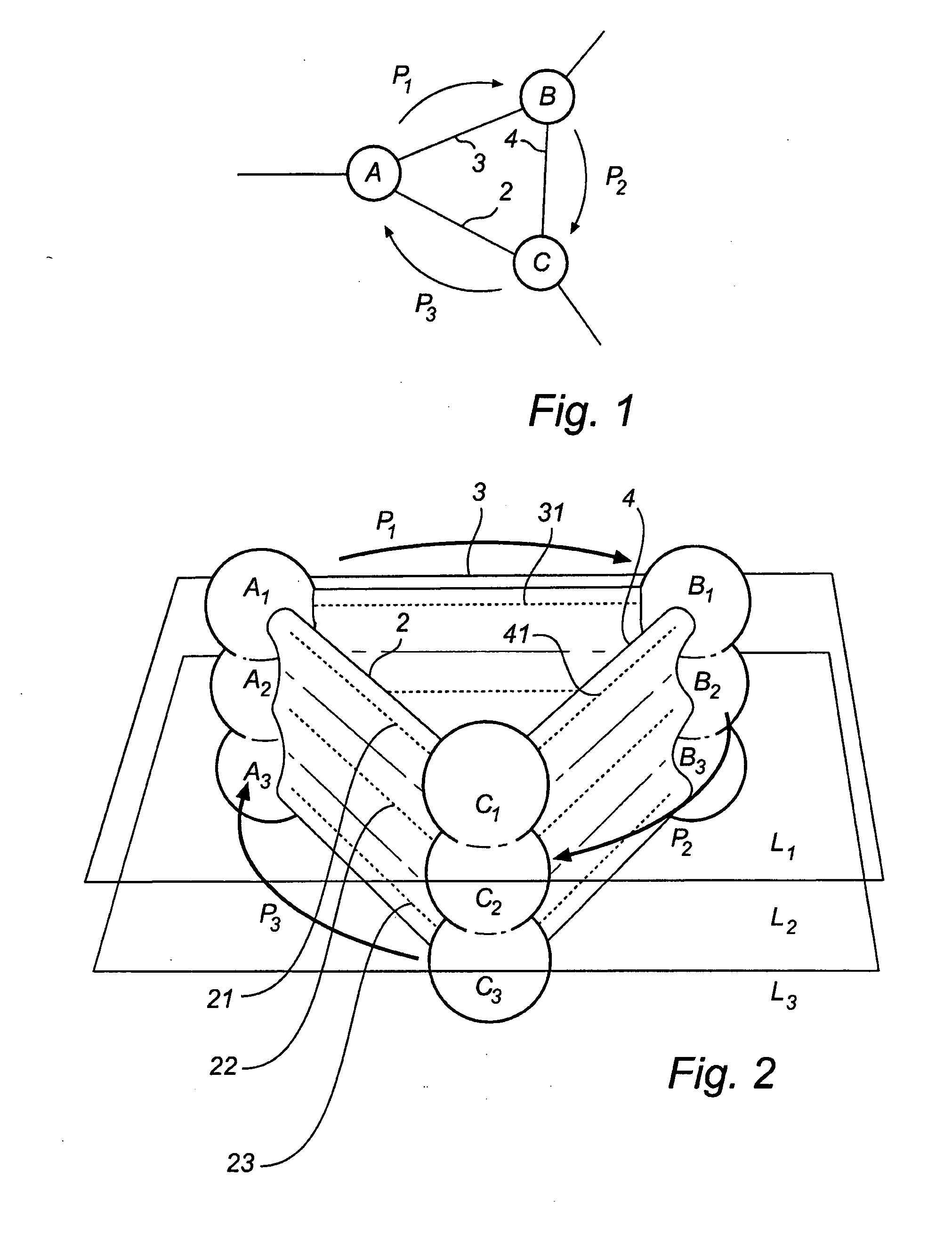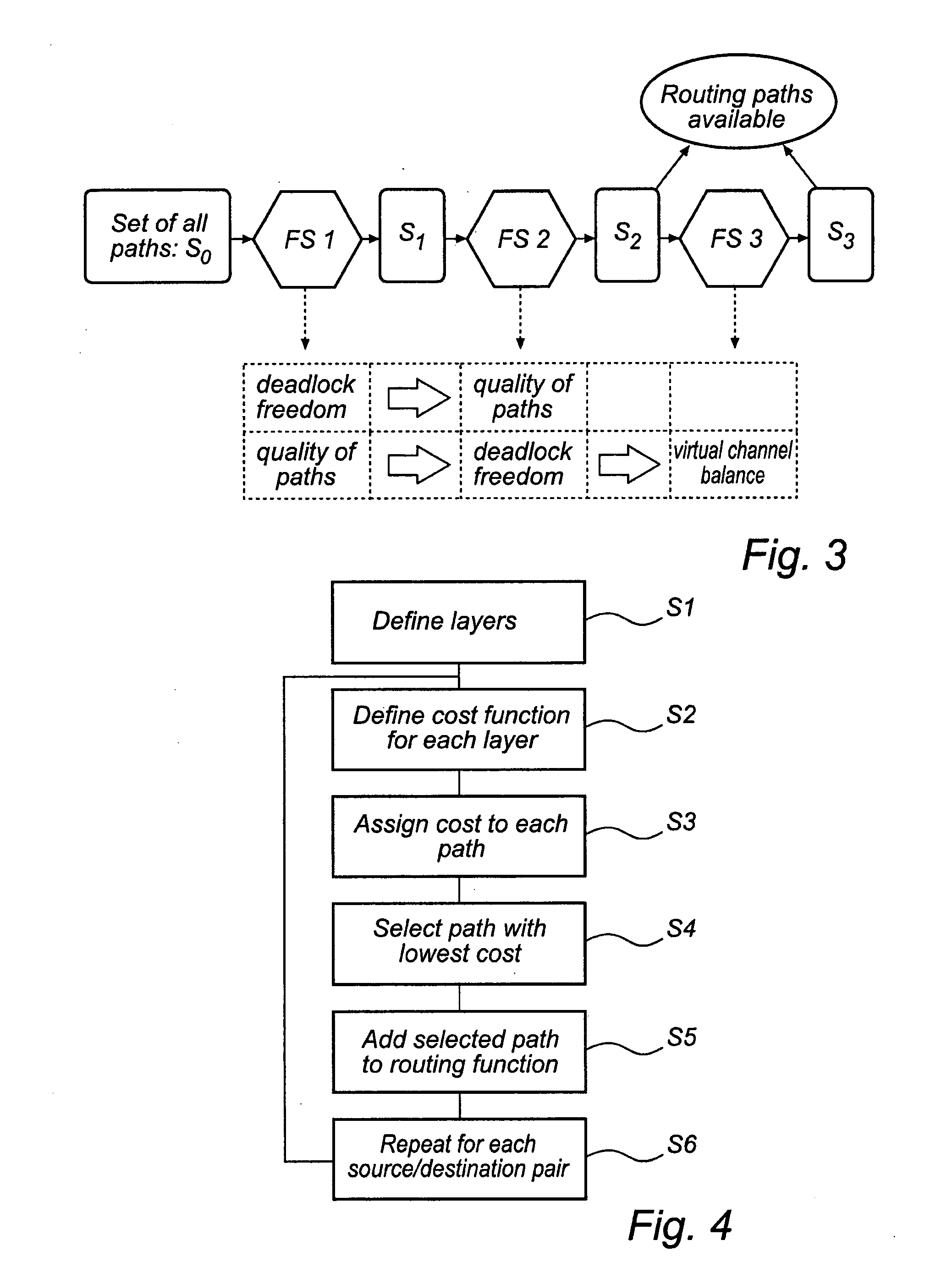Deadlock free network routing
a network routing and deadlock technology, applied in data switching networks, frequency-division multiplexes, instruments, etc., can solve the problems of increasing the probability of experiencing a fault, increasing the probability of faults, and more network components being broken, so as to improve the routing of networks
- Summary
- Abstract
- Description
- Claims
- Application Information
AI Technical Summary
Benefits of technology
Problems solved by technology
Method used
Image
Examples
Embodiment Construction
[0056]In the following description, the following terminology is used, explained with reference to FIG. 2.
[0057]A network 1 comprises a plurality of nodes A, B, C, connected by physical links 2, 3, 4. A path P is a chain of links between a source node S and a destination node D.
[0058]Each physical link 2 may contain several channels 21, 22, 23, where each channel provides communication between two nodes A, B. The physical network can then be divided into (virtual) layers L1, L2, L3, where each virtual layer comprises a set of channels 21, 31, 41 providing the same connectivity as the physical links 2, 3, 4. A node A may further have several (virtual) addresses A1, A2, A3, so that there may be one set of addresses for each virtual layer L1, L2, L3.
[0059]A routing scheme defines a set of paths between any given pair of source node S and destination node D in a network, and a routing algorithm is used to determine a routing scheme. Based on a routing scheme, each node (switch) can be g...
PUM
 Login to View More
Login to View More Abstract
Description
Claims
Application Information
 Login to View More
Login to View More - R&D
- Intellectual Property
- Life Sciences
- Materials
- Tech Scout
- Unparalleled Data Quality
- Higher Quality Content
- 60% Fewer Hallucinations
Browse by: Latest US Patents, China's latest patents, Technical Efficacy Thesaurus, Application Domain, Technology Topic, Popular Technical Reports.
© 2025 PatSnap. All rights reserved.Legal|Privacy policy|Modern Slavery Act Transparency Statement|Sitemap|About US| Contact US: help@patsnap.com



